 Black-throated Mango (Anthracothorax nigricollis)
Black-throated Mango (Anthracothorax nigricollis)
 Black-throated Mango (Anthracothorax nigricollis)
Black-throated Mango (Anthracothorax nigricollis) |
 |
| Pictures (click on them to enlarge) | ||
|---|---|---|
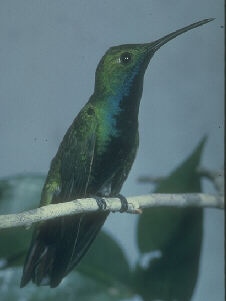 © John S. Dunning | 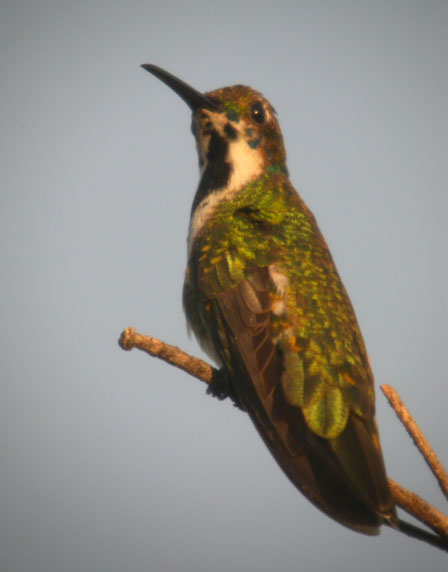 © Foek Chin Joe | 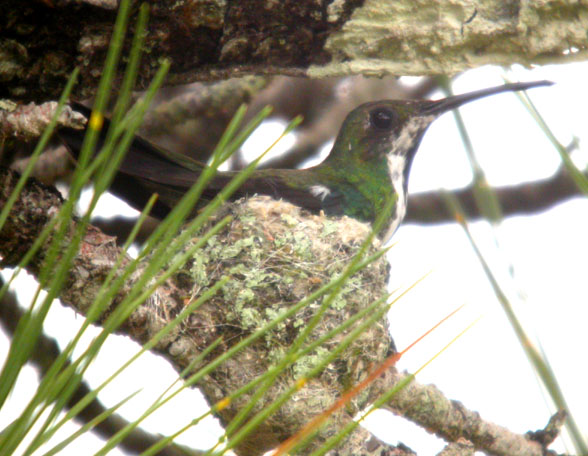 © Foek Chin Joe |
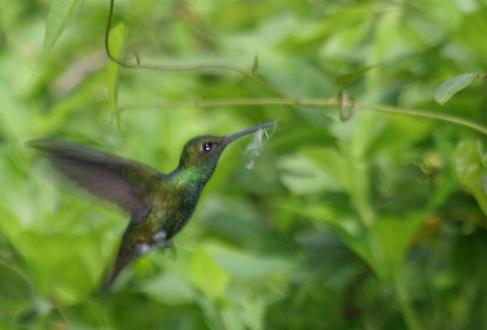 © Pieter Verheij | 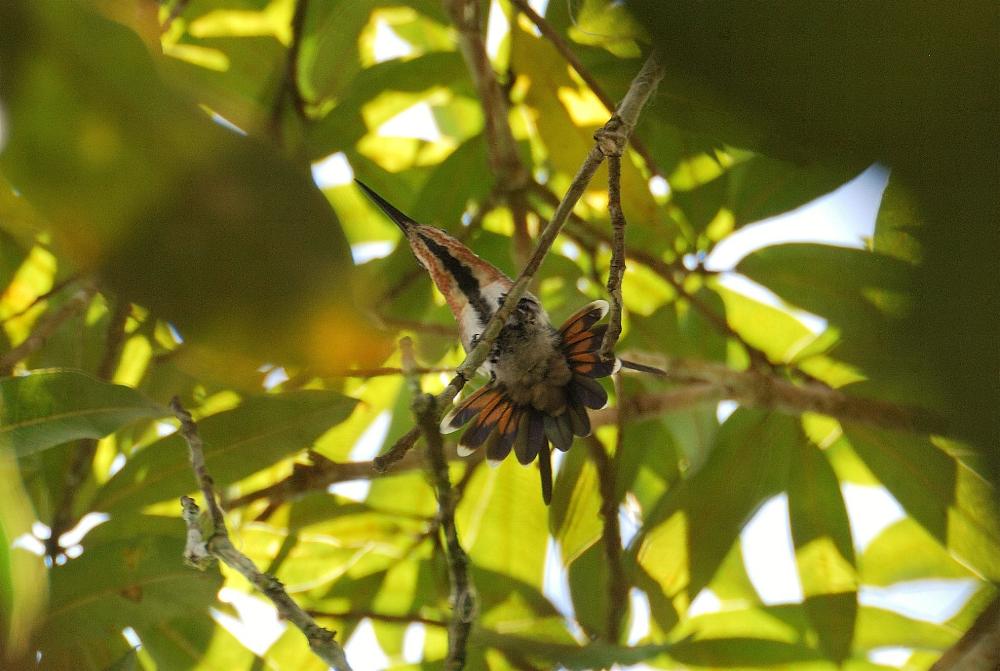 female © Martin Tot | 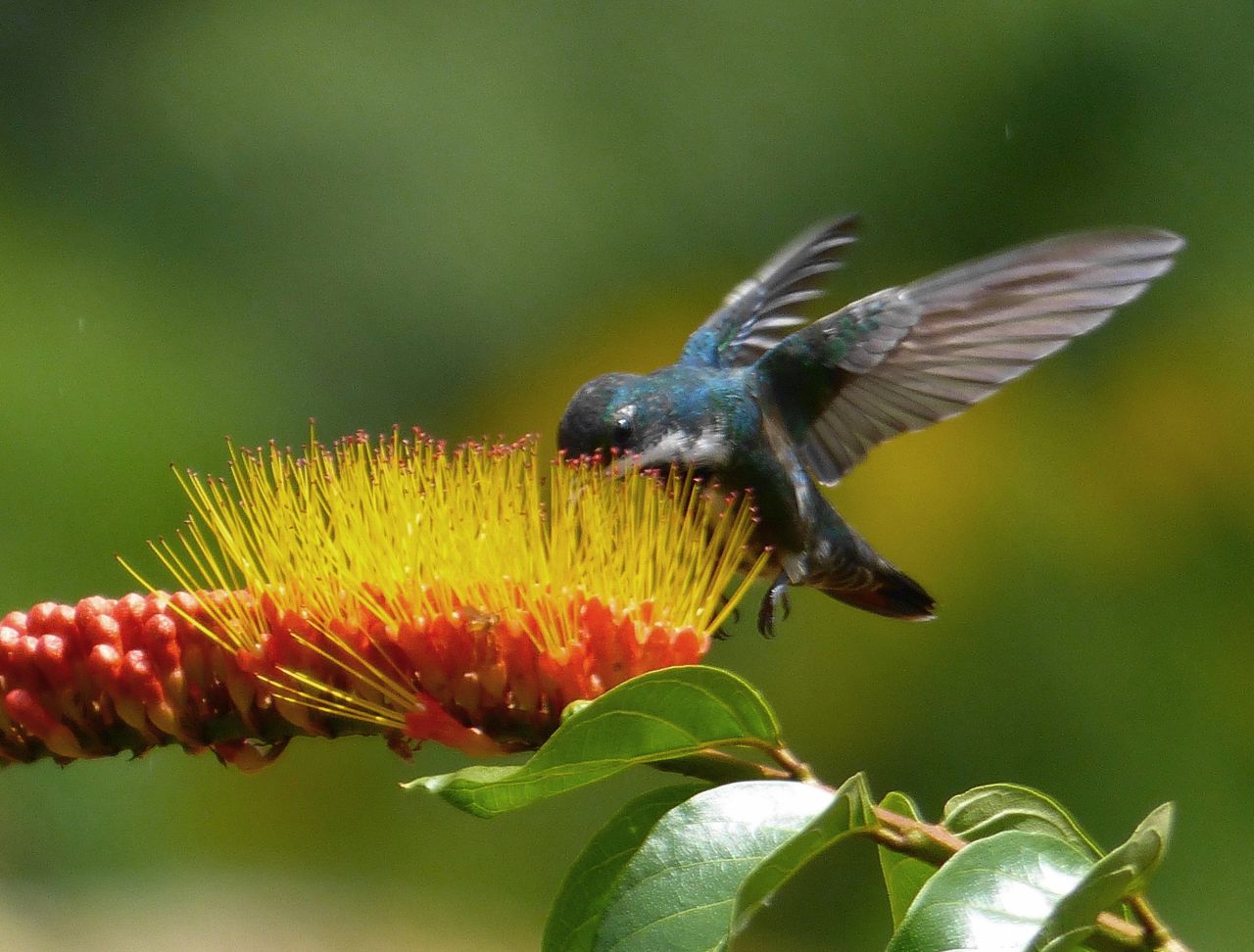 © Ton Plug |
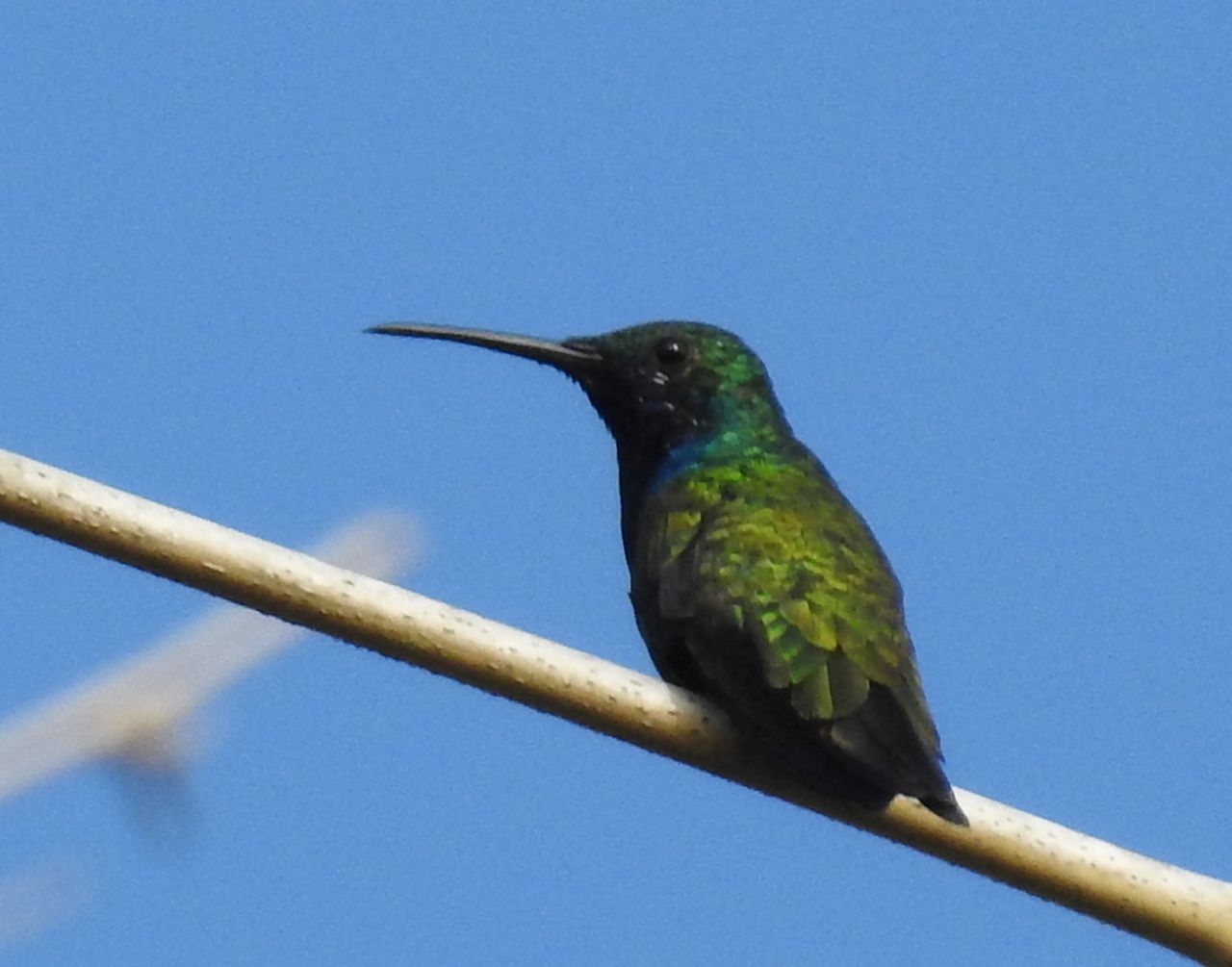 male © Dominiek Plouvier | 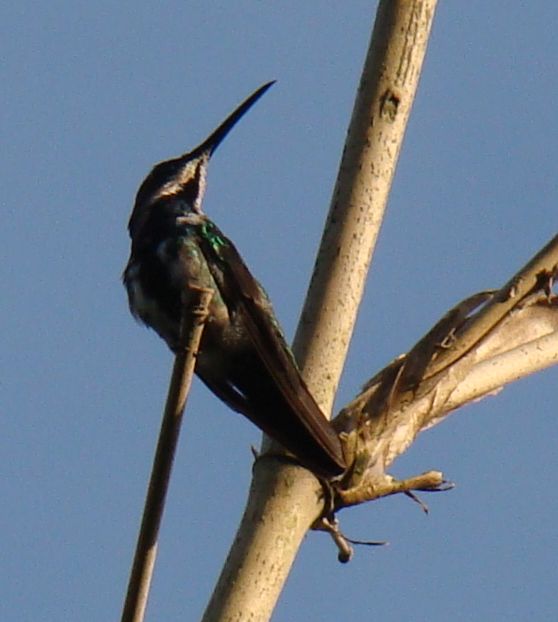 © Dominiek Plouvier | 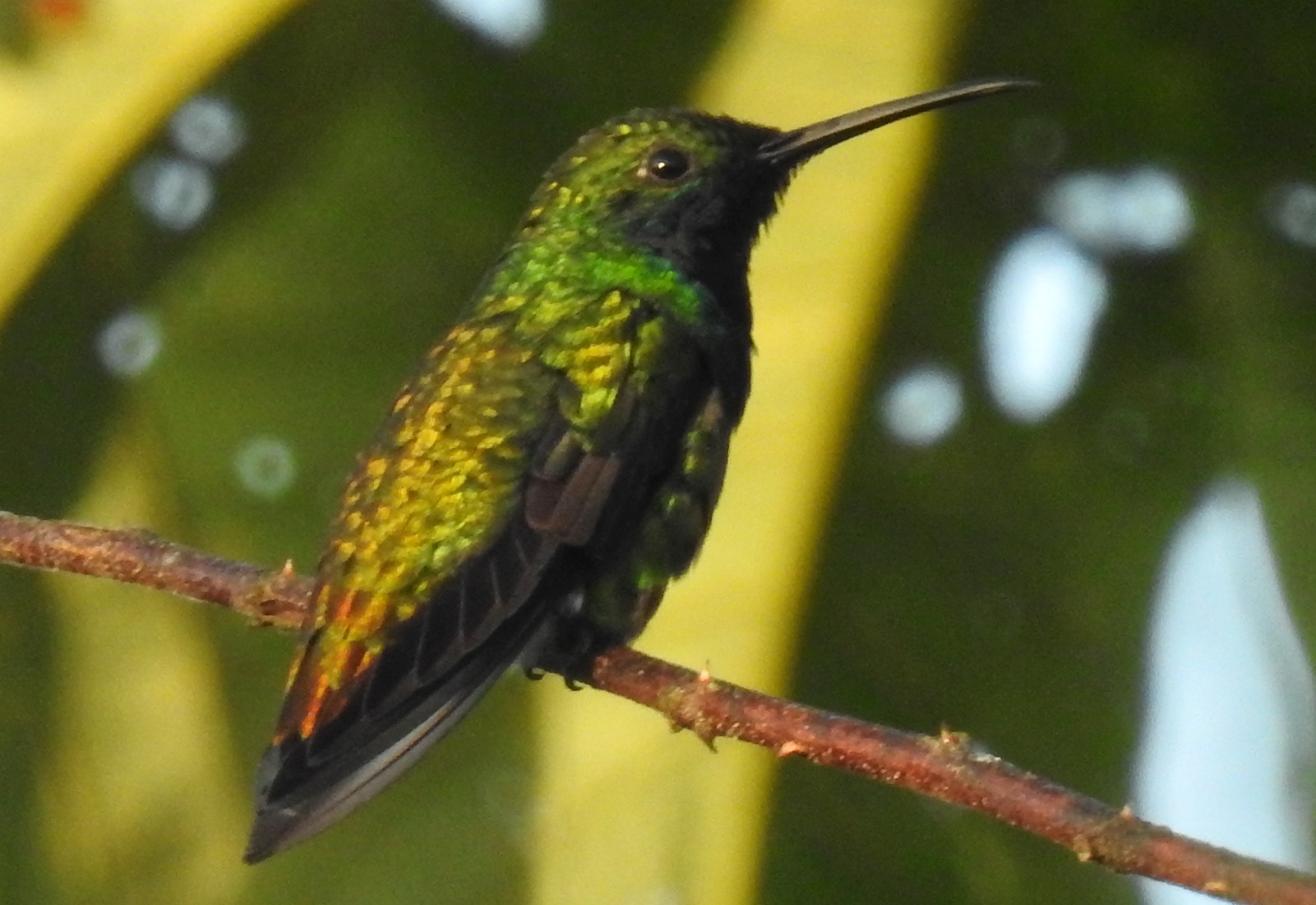 © Dominiek Plouvier |
| Black-throated Mango: A dark hummingbird with a black throat and breast and the rest green-brown, for the male. The female also has some white between the black and green parts like on the second picture by Foek Chin Joe in Suriname. The bill is bend downwards. Like all hummingbirds you find them in gardens with a lot of flowers, but this one especially in high, flowering, trees. This species is found in the coastal aera and in the savannas and somewhat less in the forest. They make their nest high in a tree. All hummingbirds are excellent flyers, forewards, side- and backwards. This costs a lot of energy, so they visit many flowers to satisfy their hunger. They eat three times their weight everyday of (sweet) food. They eat small insects also. To save energy they spend three-quarters of a day resting on a branch. The video was made by Dominiek Plouvier. |
| Video (click the link or the 'play'-button to see) | ||
|---|---|---|
| Video recording of a Black-throated Mango © ; |
|
|
||||||||||||||||||||||||||||||||||||||||||||
| Observations through the year | Observations of breeding through the year |
|---|---|
| The 215 reported observations of this bird in Suriname, mainly for the last 50 years up to 2018, have been grouped by month. More birds on one day are counted as one observation. Of course, if the graph should depict the total number of birds seen, the differences between the months could be much more pronounced. | The 3 reported breeding observations of this bird in Suriname. Most observations are about nest with eggs, some about fledglings, or feeding at a nest or the building of a nest. Of the about 5000 nests and eggs found for all species together, about 1/3 comes from the egg collection of Penard between 1896 and 1905. For some reason most collecting then was done in the first half of each year, so the shown distribution does not necessarily reflect the actual breeding preferences. The main dry season in Suriname is reckoned to be from half August to the end of November, the main wet season from half April to half August, but the the timing of begin and end does vary from year to year. Around March a second dry season often occurs. |